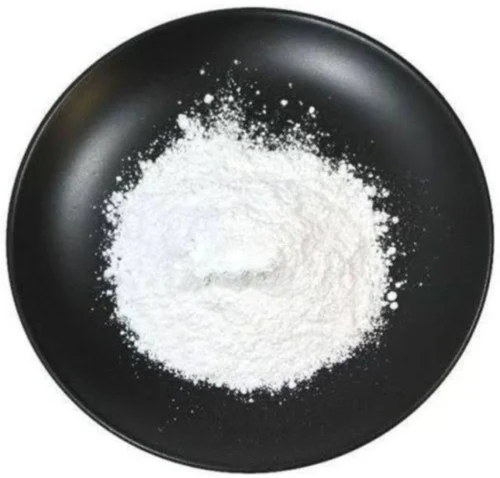6-Hydroxy-3, 4-dihydroquinolin-2(1H)-one is a chemical compound with the molecular formula C9H9NO2. It is a derivative of quinoline, which is a heterocyclic aromatic compound composed of a benzene ring fused to a pyridine ring. This compound is also known by other names such as 6-hydroxy-3, 4-dihydroquinolin-2-one or 6-hydroxy-1, 2-dihydroquinolin-3(4H)-one. Here's a breakdown of its structure and properties: Structure: Quinolin-2-one Ring: This is the core structure of the compound, consisting of a quinoline ring with an oxygen atom at position 2, which forms the lactam functional group (-C=O). Hydroxyl Group (OH): Attached at position 6 of the quinoline ring, giving the compound its hydroxy (OH) functionality. Dihydroquinoline Ring: The compound is in the dihydroquinoline form, meaning it has two hydrogen atoms added to the quinoline ring, resulting in a saturated ring structure. Physical Properties: 6-Hydroxy-3, 4-dihydroquinolin-2(1H)-one may appear as a solid compound with properties such as color, odor, and texture dependent on its purity and crystalline form. Its solubility properties can vary depending on the specific substitution pattern and other factors, but it may be soluble in polar solvents like water and ethanol. Chemical Properties: The presence of the hydroxyl group makes it potentially reactive in various chemical transformations, such as esterification, etherification, or oxidation reactions. Its quinoline ring system may undergo typical reactions observed in quinoline derivatives, including nucleophilic substitution, aromatic substitution, or metal-catalyzed reactions. Biological Activity: Quinoline derivatives have been studied for various biological activities, including antimicrobial, antimalarial, anticancer, and anti-inflammatory properties. The presence of the hydroxyl group and the quinoline ring system could contribute to its potential pharmacological effects. Uses: This compound or its derivatives may find applications in medicinal chemistry, particularly in the development of pharmaceuticals. It could also serve as a building block in organic synthesis for the preparation of more complex molecules. As with any chemical compound, the specific properties, uses, and potential applications of 6-Hydroxy-3, 4-dihydroquinolin-2(1H)-one would depend on factors such as its purity, stability, reactivity, and pharmacological profile. Experimental data and further research would be necessary to fully characterize its properties and potential applications in various fields. 6-Hydroxy-3, 4-Dihydroquinolin-2(1H)-One manufacturer in Ankleshwar , Gujarat, India. 6-Hydroxy-3, 4-Dihydroquinolin-2(1H)-One manufacturer in India.
Chat with us on WhatsApp
×
This is your website preview.
Currently it only shows your basic business info. Start adding relevant business details such as description, images and products or services to gain your customers attention by using Boost 360 android app / iOS App / web portal.

2024-03-22T10:12:50
6-Hydroxy-3, 4-dihydroquinolin-2(1H)-one is a chemical compound with the molecular formula C9H9NO2. It is a derivative of quinoline, which is a heterocyclic aromatic compound composed of a benzene ring fused to a pyridine ring. This compound is also known by other names such as 6-hydroxy-3, 4-dihydroquinolin-2-one or 6-hydroxy-1, 2-dihydroquinolin-3(4H)-one. Here's a breakdown of its structure and properties: Structure: Quinolin-2-one Ring: This is the core structure of the compound, consisting of a quinoline ring with an oxygen atom at position 2, which forms the lactam functional group (-C=O). Hydroxyl Group (OH): Attached at position 6 of the quinoline ring, giving the compound its hydroxy (OH) functionality. Dihydroquinoline Ring: The compound is in the dihydroquinoline form, meaning it has two hydrogen atoms added to the quinoline ring, resulting in a saturated ring structure. Physical Properties: 6-Hydroxy-3, 4-dihydroquinolin-2(1H)-one may appear as a solid compound with properties such as color, odor, and texture dependent on its purity and crystalline form. Its solubility properties can vary depending on the specific substitution pattern and other factors, but it may be soluble in polar solvents like water and ethanol. Chemical Properties: The presence of the hydroxyl group makes it potentially reactive in various chemical transformations, such as esterification, etherification, or oxidation reactions. Its quinoline ring system may undergo typical reactions observed in quinoline derivatives, including nucleophilic substitution, aromatic substitution, or metal-catalyzed reactions. Biological Activity: Quinoline derivatives have been studied for various biological activities, including antimicrobial, antimalarial, anticancer, and anti-inflammatory properties. The presence of the hydroxyl group and the quinoline ring system could contribute to its potential pharmacological effects. Uses: This compound or its derivatives may find applications in medicinal chemistry, particularly in the development of pharmaceuticals. It could also serve as a building block in organic synthesis for the preparation of more complex molecules. As with any chemical compound, the specific properties, uses, and potential applications of 6-Hydroxy-3, 4-dihydroquinolin-2(1H)-one would depend on factors such as its purity, stability, reactivity, and pharmacological profile. Experimental data and further research would be necessary to fully characterize its properties and potential applications in various fields. 6-Hydroxy-3, 4-Dihydroquinolin-2(1H)-One manufacturer in Ankleshwar , Gujarat, India. 6-Hydroxy-3, 4-Dihydroquinolin-2(1H)-One manufacturer in India.
2024-03-22T10:12:50
Keywords
- odor
- Uses
- India
- color
- water
- purity
- C9H9NO
- Gujarat
- ethanol
- texture
- position
- research
- presence
- breakdown
- stability
- reactivity
- anticancer
- Ankleshwar
- 6-hydroxy-1
- oxygen atom
- other names
- preparation
- development
- benzene ring
- antimalarial
- antimicrobial
- pyridine ring
- other factors
- building block
- Hydroxyl Group
- solid compound
- etherification
- polar solvents
- esterification
- various fields
- core structure
- pharmaceuticals
- crystalline form
- OH) functionality
- Experimental data
- chemical compound
- molecular formula
- complex molecules
- organic synthesis
- typical reactions
- two hydrogen atoms
- Biological Activity
- specific properties
- oxidation reactions
- Quinolin-2-one Ring
- medicinal chemistry
- Chemical Properties
- Physical Properties
- dihydroquinoline form
- Dihydroquinoline Ring
- quinoline derivatives
- solubility properties
- aromatic substitution
- quinoline ring system
- potential applications
- lactam functional group
- pharmacological profile
- saturated ring structure
- metal-catalyzed reactions
- nucleophilic substitution
- anti-inflammatory properties
- specific substitution pattern
- various biological activities
- heterocyclic aromatic compound
- various chemical transformations
- potential pharmacological effects
- 6-Hydroxy-3, 4-dihydroquinolin-2(1H)-one
- 4-Dihydroquinolin-2(1H)-One manufacturer

Submit Your Enquiry